What is a tweed suit? Originally designed for the rugged landscapes of the British Isles, this type of suit has evolved into a symbol of smart, understated elegance. In this guide, I’ll walk you through the essence of the tweed suit: where it comes from, what makes it unique, and how you can wear it well, whenever you plan to go.
1. What is a tweed suit?
A tweed suit is a classic men’s ensemble made from tweed fabric: a thick, rough, and durable wool that originated in the British Isles. Traditionally woven in earthy tones and distinctive patterns, tweed was first designed to withstand the wind, the rain, and the chill of the Scottish countryside. But over time, it has become a symbol of quiet sophistication and rugged elegance.
Unlike finer worsted wool suits that you might wear in the boardroom, a tweed suit has a more textured, casual charm. Wearing a tweed suit means you are embracing a heritage.
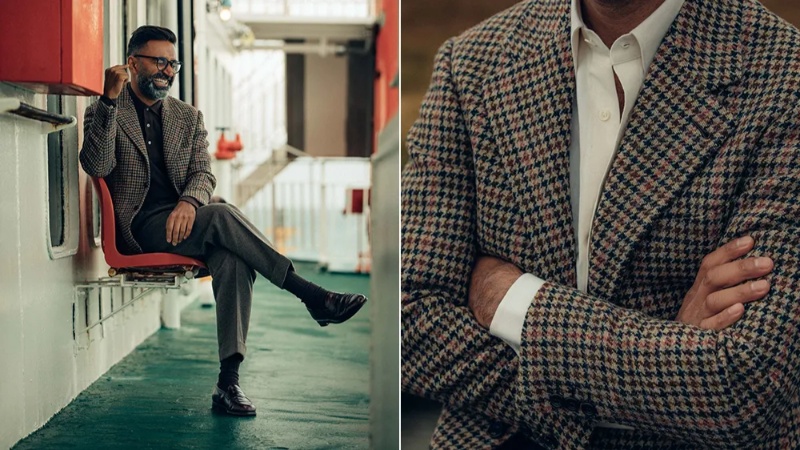
2. The origin of the tweed fabric suit
To truly understand what makes a tweed suit special, we must begin with its roots, which go deep in the misty hills of Scotland and the north of England, where the fabric first came to life.
Tweed was originally handwoven by local artisans using wool from hardy sheep breeds, designed not for fashion, but for function. It was thick, warm, and resistant to wind and moisture, a perfect choice for the unpredictable weather of the British countryside.
In the 19th century, tweed found its way into the hearts of the British aristocracy, especially among landowners and sporting gentlemen. Country estates would often commission their exclusive patterns (called “estate tweeds”), which distinguished family members or staff during outdoor pursuits like hunting and fishing. These weren’t just garments; they were markers of identity and class.
As time passed, the fabric evolved from purely utilitarian to sartorially iconic. What began as a rustic wool for rugged terrain slowly became a symbol of refinement, tradition, and quiet sophistication. Its rich texture, natural colors, and heritage appeal made it a favorite not only among noblemen but later academics, artists, and gentlemen who appreciated classic British tailoring.
A tweed suit is more than just fabric, but a legacy. It’s a woven history, one that speaks of craftsmanship, country life, and timeless elegance. And as any good tailor will tell you, few materials carry such character as tweed.

3. Types of tweed you should know
Not all tweed is created equal. Over the years, different regions developed their own unique styles, each with distinct textures, colors, and characteristics. Let me introduce you to the four essential types of tweed every gentleman should know.
Harris tweed
Hailing from the remote Outer Hebrides of Scotland, Harris Tweed is perhaps the most iconic of them all. By law, it must be handwoven in a weaver’s home using pure virgin wool dyed and spun on the islands.
It’s known for its rich, earthy tones and robust weave. Harris Tweed is thick, weather-resistant, and full of character, perfect for a traditional country-style suit with real heritage behind it.
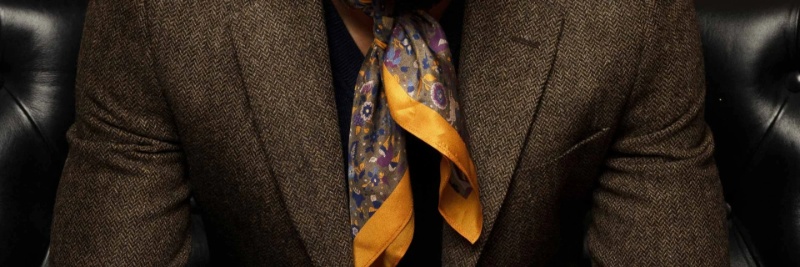
Donegal tweed
Named after County Donegal in Ireland, Donegal Tweed is instantly recognizable for its colorful flecks scattered throughout the fabric. These specks mimic the wild Irish landscape: moss greens, heather purples, sky blues; create a textured visual depth that’s both charming and playful.
Donegal tweed is often softer than Harris Tweed, making it a lovely choice for modern tailoring with a touch of personality.
Shetland tweed
Woven from the wool of Shetland sheep off the north coast of Scotland, Shetland Tweed is lighter and finer in texture. It has a soft, almost airy feel while still retaining warmth.
This type of tweed is ideal for more relaxed or urban-style suits, offering comfort without sacrificing the rustic appeal tweed is known for.
Cheviot tweed
Originating from the Cheviot Hills on the border between England and Scotland, Cheviot Tweed is firm, springy, and a bit coarser to the touch.
Traditionally used for shooting jackets and sporting wear, it’s one of the more structured and hard-wearing types of tweed. A suit made from Cheviot tweed gives off a strong, rugged presence, built for resilience and long-lasting wear.
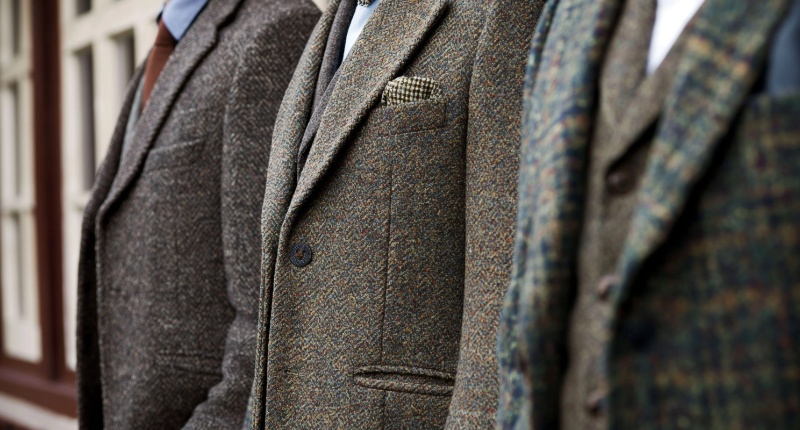
4. What makes a tweed suit unique?
Practicality
There’s a reason why tweed suits stand apart in the world of menswear. It all begins with the fabric itself. Tweed is thick, warm, and incredibly durable. Woven from rough wool, it offers natural insulation that makes it ideal for colder months, while still allowing the body to breathe.
One of the things I admire most about tweed is its subtle water resistance. In the damp climates of the UK, this quality made it a trusted companion for outdoor pursuits, and it still holds up beautifully today.

Personality
Tweed comes alive in its patterns. From the zigzag charm of herringbone to the bold geometry of houndstooth, the refined simplicity of windowpane, or the rustic character of plain tweed, each weave tells a story.
These designs aren’t printed. They’re woven directly into the fabric, giving the suit depth and texture that you can both see and feel.

Construction
A proper tweed suit often features a full canvas structure, which helps the jacket mold naturally to your frame over time. It’s a suit that breaks in like a fine pair of leather shoes, keeps growing more comfortable, more “yours” with every wear.
Tweed suits also tend to have a classic silhouette: structured shoulders, a slightly fuller cut, and just enough weight to drape handsomely. It’s not a fast-fashion garment; it’s a long-term investment in style and substance.
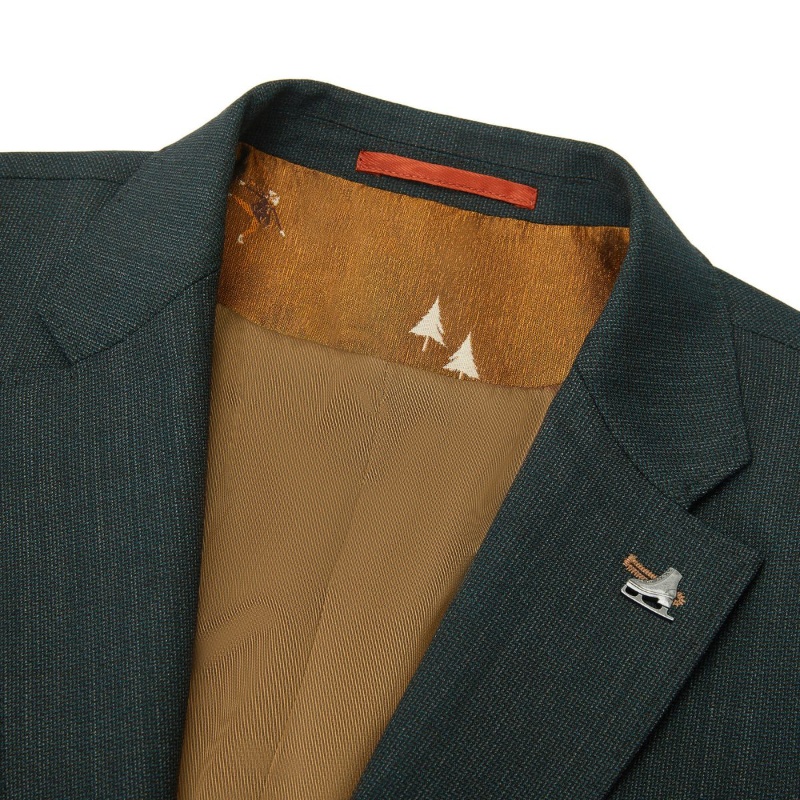
5. When and where to wear a tweed suit
Can I wear a tweed suit to the office? The answer, quite simply, is yes – depending on your work environment. In a traditional corporate setting, where navy and charcoal worsted suits still dominate, tweed might feel a touch too casual.
But in more creative, academic, or relaxed business environments, a well-tailored tweed suit strikes just the right balance between smart and approachable. Opt for a slim-cut tweed in muted tones like brown, grey, or olive, and you’ll appear polished without seeming overly formal.
Beyond the workplace, tweed suits truly shine in fall and winter social settings. They’re a go-to choice for autumn weddings, especially those held outdoors or in rustic venues. The rich texture and earthy color palette of tweed complements the seasonal atmosphere beautifully.
Whether you’re the groom, a guest, or simply attending a festive gathering, a tweed suit adds warmth, both physically and stylistically.
Tweed also works effortlessly for casual-formal occasions, such as dinner dates, weekend strolls in the city, or countryside getaways. You can easily dress it up with a shirt and tie, or dress it down with a roll-neck sweater and boots. That’s part of its charm: it’s versatile, grounded, and always in good taste.
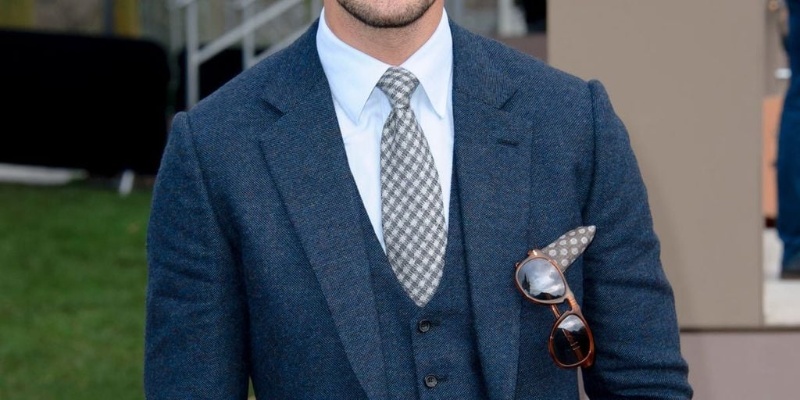
6. How to wear a tweed suit with confidence
Confidence comes not just from fit, but from knowing how to wear your suit well. Tweed, with its texture and character, gives you the perfect canvas to express both classic and modern style.
Shirt, tie, and shoe pairings
For a smart and balanced look, start with a crisp cotton shirt. A white or pale blue shirt is a safe and elegant choice, especially if your tweed features bold patterns.
For ties, knitted or wool ties with their texture complement the ruggedness of tweed better than shiny silk. Earth tones, deep greens, burgundy, or navy ties all pair wonderfully, depending on the color of your suit.
When it comes to shoes, go for brogues or derby shoes in brown or oxblood leather. Their slightly more relaxed formality pairs perfectly with the tweed’s rustic roots.
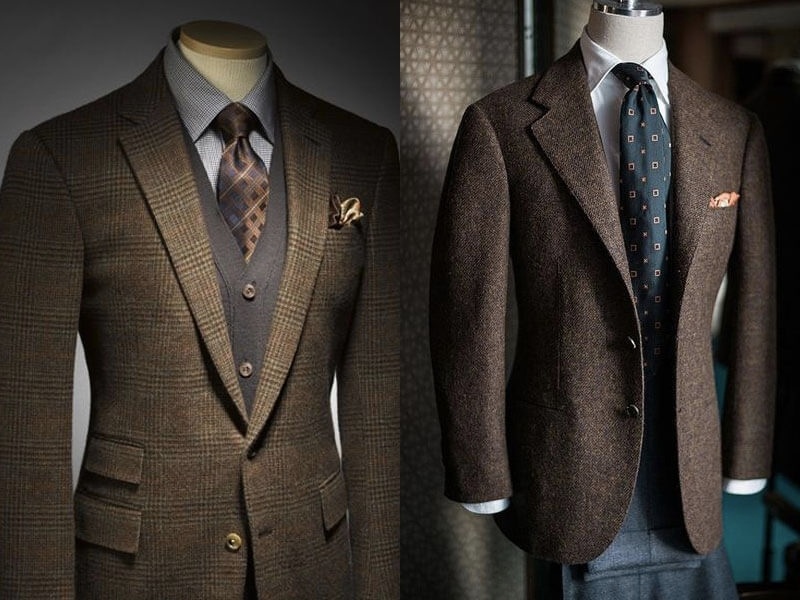
Layering for cold weather
One of the real pleasures of a tweed suit is how well it layers in the colder months. Under your jacket, consider adding a fine-gauge wool sweater, a roll-neck, or a cardigan for warmth and visual interest.
Over the top, a wool overcoat or trench adds polish. Don’t shy away from accessories either—a well-chosen scarf in cashmere or lambswool, and perhaps even a flat cap or gloves, can complete the look while keeping you comfortable.
Remember: texture loves texture, and tweed handles layering beautifully.
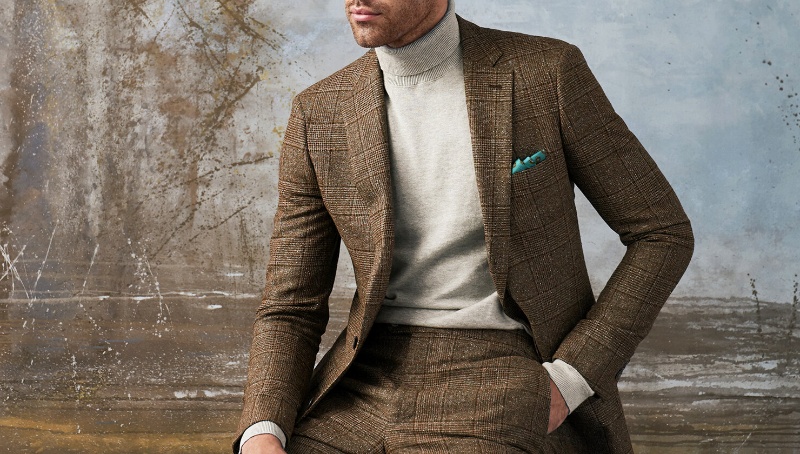
Classic vs. Modern style
To embrace a classic British look, lean into tradition. A three-piece tweed suit with a waistcoat, a pocket watch chain, and rich autumnal tones will capture that heritage aesthetic. Pair it with heavier fabrics, round eyeglasses, or vintage brogues.
For a modern take, opt for slimmer cuts, cleaner lines, and fewer accessories. You might skip the waistcoat and wear your tweed jacket with tailored trousers in a contrasting fabric.
A black turtleneck and sleek Chelsea boots can instantly bring your tweed suit into contemporary style territory.

No matter your approach, the key is balance. Tweed has its presence, so let it lead the outfit while keeping the rest of your look thoughtful and complementary.
7. How to care for your tweed suit
A well-made tweed suit can last you decades, but only if you treat it with the respect it deserves. Unlike everyday garments, tweed is a natural woolen fabric that benefits from proper care and thoughtful handling. Taking care of a tweed suit isn’t complicated; it just requires consistency and a bit of attention.
Storage, hanging, and moth protection
First, always hang your tweed suit on a wide, well-shaped wooden hanger to preserve the structure of the shoulders. Avoid wire hangers, which can distort the jacket’s shape over time. Give your suit space to breathe in the closet—wool needs airflow to stay fresh.
Most importantly, protect it from moths. Store your suit in a breathable garment bag (never plastic), and consider adding cedar blocks or lavender sachets to your wardrobe. These natural repellents keep insects at bay while adding a pleasant scent.
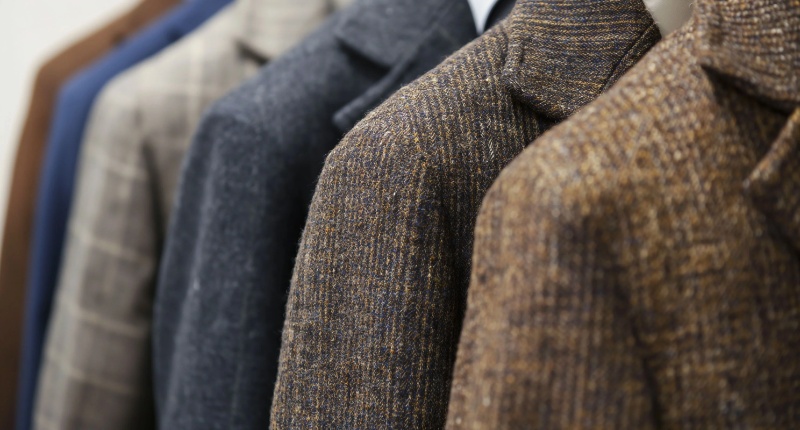
Should you dry clean tweed?
Dry cleaning is sometimes necessary, but it should be used sparingly with tweed. Too much dry cleaning can strip the wool of its natural oils, leaving the fabric dry and brittle.
As a general rule, I recommend dry cleaning your tweed suit no more than once or twice a season, unless it’s heavily soiled.
Between cleanings, spot-clean small stains with a damp cloth and brush off surface dirt with a soft-bristle garment brush after each wear. Let your suit rest for a day or two between uses to allow the fibers to recover and breathe.
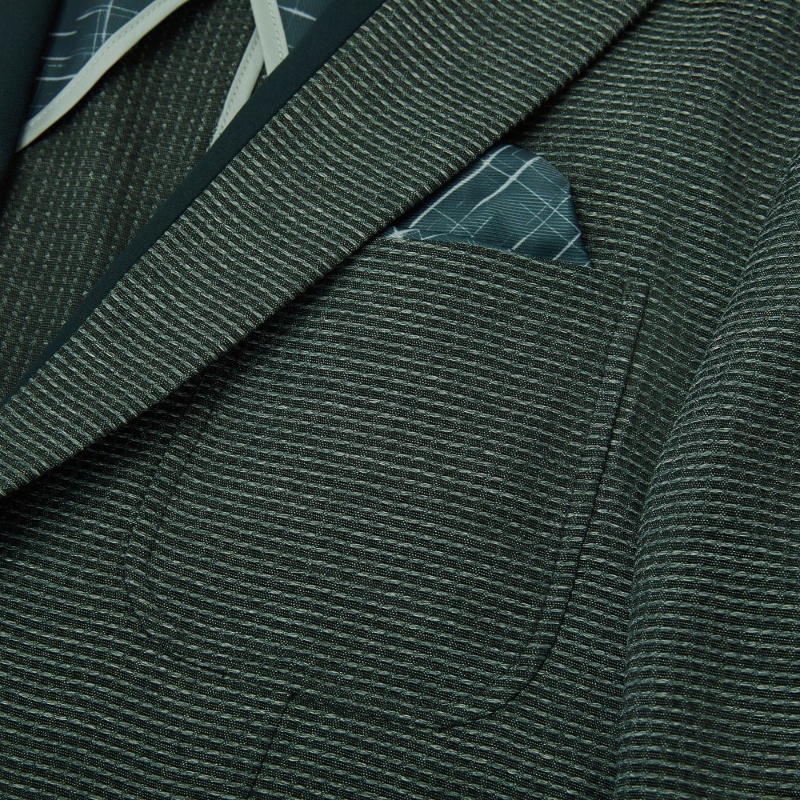
When to refresh your tweed suit
Even with the best care, every suit benefits from a little refresh now and then. If you wear your tweed suit frequently, consider relining the jacket or reinforcing areas like elbows and cuffs every few years.
If it starts to lose shape or feel tired, a professional pressing or minor tailoring adjustments can breathe new life into it. And of course, seasonal maintenance—brushing, airing out, and checking for wear—goes a long way in preserving the integrity of the suit.

So, what is a tweed suit? At its heart, it’s a celebration of tradition, texture, and timeless masculinity. From its rugged origins to its place in refined modern wardrobes, the tweed suit offers both function and flair, perfect for the man who values quality, comfort, and character. Whether you wear it with boots on country walks or dress shoes in the city, a well-made tweed suit tells a story—one of heritage, craftsmanship, and quiet confidence.
Image cre: Internet
Create from my passion about sartorial that I accidently discover when I was searching to upgrade my style, this website is dedicated to providing in-depth knowledge, expert styling tips and the latest trends in men’s tailored fashion. Though sometimes I might sound a little cheesy cuz of all that philosophy book I’ve read 🙂
